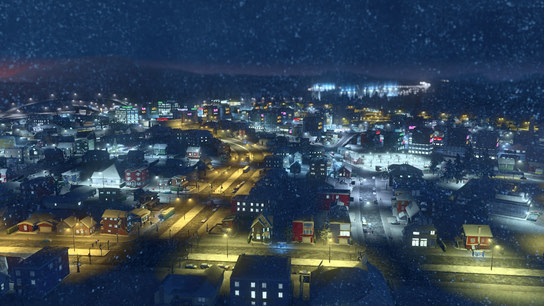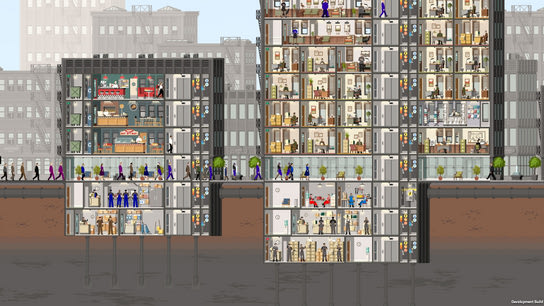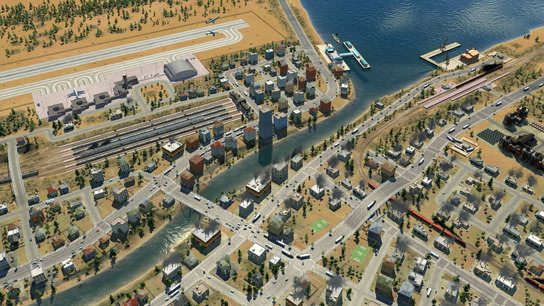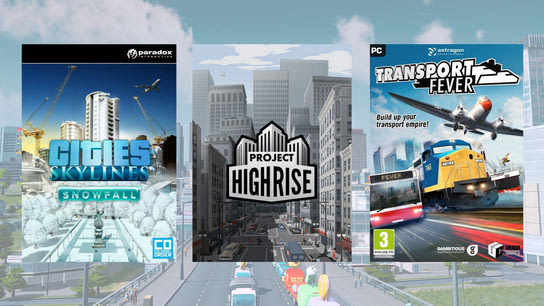For the first time ever, I’ve spent more hours playing games on Linux this year than any other operating system or console. These were my favorite games in 2016.
Here is my list and micro-reviews for the best new management games for Linux this year:
Cities Skylines: Snowfall + Natural Disasters

City Skylines was released last year, but I’ll include it on this list anyway because of the Snowfall and Natural Disasters expansion packs that came out this year. and because it’s one of the best games I’ve played in years. City Skylines is a city builder game that just got everything right. It’s not particularly difficult to master, but it’s fun to grow, expand, and reshape your city into an ever-growing metropolis.
In Snow Fall, your city building options expanded to include trams and cold temperate environments. Snowplows, road maintenance, fluctuating demands on the energy grid changing with the temperature, …. Snowfall is the first city builder with snow and winter mechanics worth mentioning. It can be a bit dull to play on an all-white snow-covered map compared to a regular level, but it’s an accurate representation of what it’s to live somewhere with lots of snow.
In Natural Disasters, life in your city took a turn for the worse. Your city will optionally be hit by random comet strikes, floods, sinkholes, wildfires, tornado, and other catastrophes. Each event might damage your infrastructure, and you need to take care of emergency responses and varied reserves and sources of critical infrastructure.
You may find it odd to include disasters in a creative building game? Well, they help me with renovations. I hate destroying what I’ve built even though it’s necessary to address traffic bottlenecks and other problems. With Natural Disasters: the game takes care of this for you.
The great variety of City Skylines earns it the top spot in my list. I believe I’ll continue to play this game for a few more years, at least.
Project Highrise

Project Highrise is clearly inspired by SimTower — a mid-90’s tower-building simulator – but Project Highrise is a different game entirely. I used to love SimTower, and had hoped Project Highrise would be more of the same.
Each game of Project Highrise start out slow. By the time you’ve filled the screen with apartments, offices, and shops the game’s slow pace no longer feels slow. The game is structured a bit weirdly where you can’t discover in advance that you’re about to do something stupid (like placing noisy cafés next to apartments) until after both properties are rented out and the damage is already done.
I do prefer building and creating things, but Project Highrise proved to be enough of a challenge in its own way to be entertaining. You loose out on the feeling of building a huge tower as the game instead focuses on the minutia and micro-management of renting out properties in a tower. There are a lot more levels of management than there will be levels to your tower. It’s okay to manage water supplies, phone switch boards, and electricity — having to do manual wire and pipe work on every property on every floor gets old pretty fast.
Transport Fever

Everything in Transport Fever has been said and done before. It’s a well put together modernization of the good old Transport Tycoon Deluxe (TTD). Transport Fever removes a lot of the frustration with TTD, and modernizes the game mechanics. For example, distribution of letter mail is no longer a thing, and city councils are much more malleable.
The modern graphics allow for more detailed and satisfying build than the classics could ever accomplish. Albeit an accurate representation, it can be kind of jarring that the game doesn’t offer good tools for terrain smoothing, as tracks and roads can make the terrain look bad at times. It’s quite rewarding when you manage to create a fast and beautiful connection between two cities.
In large games (the only kind worth playing), the game exhibits pretty bad performance with very low framerate and seconds-long hangs. This isn’t a Linux specific issue but can be somewhat worse on Linux than Windows.
Overall, Transport Fever is good fun without the complexity of a full city builder. The core game is kind of small even though it will take you hours to get it right. Transport Fever does reek of upcoming DLC packages, however.
All of these titles reflect a certain level of nostalgia on my part. However, I haven’t exclusively played on Linux and the games I’ve played on other platforms have been more varied than the above list. I do believe I would have played more varied games on Linux if more titles where available.
All of the credit for the growing number of games available for Linux goes to Steam. Thank you for pushing the game publishers to support Linux, Valve! If only EA Games and more of the other major game publishers would follow suit. Joining in with all the smaller studios who all somehow find the time to develop Linux versions of their games side-by-side with the Windows versions.
However, as mentioned on this blog earlier: EA seems to be tightening their ties with Microsoft and Windows rather than focusing on new platforms and new potential markets.
